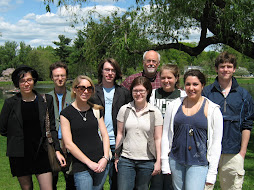
Gerald Tyminski (Photo by Greg Hebert)
By Samantha Henry, Justin Maher and Christine Sullivan
It was the day after the Connecticut General Assembly had passed a bill banning the construction of the controversial ash landfill in Franklin, Conn. and Paul Nonnemacher was frustrated.
“It was a battle of facts versus emotion,” said Nonnenmacher, the director of public affairs for the Connecticut Resource Recovery Authority that wanted to build the landfill. “All we wanted people to do was to slow down and take a calm, rational look at the facts.”
But local residents had made up their mind. Less than a month earlier they had voted in a non-binding referendum by a 4-to-1 margin to oppose the project. The night before the House had voted 95 to 51 in favor of the bill. A week before the Senate margin had been 27 to 4 in support.
Governor Jodi Rell had not yet indicated whether she would sign the bill but Nonnemacher was gloomy.
Nonnenmacher said that the CRRA had spent years finding a location that met all of the strict specifications set by the Connecticut Department of Environmental Protection. He said the residents of Franklin “took that list of criteria and slapped a new one on it– political stroke.”
Nonnenmacher also insisted that the opponents of the landfill didn’t know what they are missing out on in potential benefits, including a payment to the cash-strapped town of about $1.5 million a year. What this bill has done, he said, “whether you’re for it or against it, is it has turned around and taken one of the very few sites remaining in Connecticut out of the realm of possibility.”
“Land is precious,” says Nonnencmacher, “and we’ve got better things to do with it than putting piles of garbage on it.”
Some of the concerns of the people in Franklin included the threat to the water supply, air quality, and property value. According to Nonnenmacher, the Shetucket River, where the landfill was to be built, was a Class B river that is not used for drinking water.
“Probability is very low that a modern day double-lined landfill would leak,” said Gerald Tyminski, executive director of the Southeast Connecticut Regional Resource Recovery Authority, a sister agency.
Nonnenbacher said that the people in Connecticut make a huge mess with a lot of garbage – about 3 million tons each year. “It’s our responsibility to get rid of our own mess, not trucking it out of state and instead doing it in a way that’s responsible.”
CRRA officials contend that the ash is only the residue of garbage produced in homes and by the time it gets to a landfill it is benign and has been reduced in volume by 90 percent.
To demonstrate, Nonnemacher and Tyminski led a tour of the Preston, Conn. waste incinerator.
“We are operating on what’s referred to as the maximum achievable control technology,” explained Tyminski, whose regional organization is responsible for the Preston plant.
At 2,000 degrees, the Preston facility can make a variety of items turn to ash. Trucks deliver about 1,000 tons a day and the facility burns about 260,000 tons of waste per year. The heat boils water to turn a generator, which on this day was producing 16 to 18 megawatts of electricity.
Tyminski said the Preston plant used to have a nearby ash landfill and he said it has never leaked. Modern landfills are required to have a double liner.
“Essentially what the ash ends up in is a ziplock bag,” Tyminski said. That zip-lock bag, according to Tyminski, is good for about 50 to 100 years.
The Preston ash landfill is surrounded by test-wells that monitor for any groundwater contamination. As long as the landfill has been there, it has not made a measurable impact on water-quality, said Tyminiski.
Tyminski and Nonnenmacher both admit that the ash contains some heavy metals and, according to Tyminski, “it’s not stuff that you would put in your backyard…not stuff that you would spread around.” But when proper precautions are taken, as would be in the skillfully designed, constructed, and monitored landfill, they said it is not hazardous to anything– or anyone– around it.
Nonnenbacher compared the plan to build an ash landfill in Franklin to the burden his local community has in hosting a prison.
“Again, I don’t like it, but we need it,” Nonnenbacher said. “I wouldn’t expect the people of Franklin to like having an ash landfill either.”

No comments:
Post a Comment